

What is Electric Actuator
Catalog
What's an Electric Actuator?Making Electric ActuatorsTypes of Electric Actuators:The Components of an Electric ActuatorGears for Electric ActuatorsHow an Electric Actuator WorksBenefits and Drawbacks of Electric ActuatorsChoosing Between Electric and Pneumatic ActuatorsConclusionRelated ArticlesWhat's an Electric Actuator?
An electric actuator is a device that turns electrical energy into mechanical motion. Think of it like a little machine that helps things move. Actuators are super useful in all sorts of places, from factories to homes. They can open and close valves, move parts around, and do all sorts of handy work.
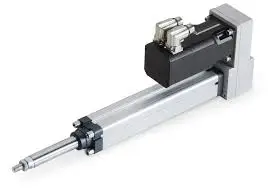
electric actuator
Making Electric Actuators
To make an electric linear actuator, you start with an electric motor. The motor has two main parts: the stator, which is a magnet that doesn't move, and the rotor, which spins around in the middle because of the magnet's magic.
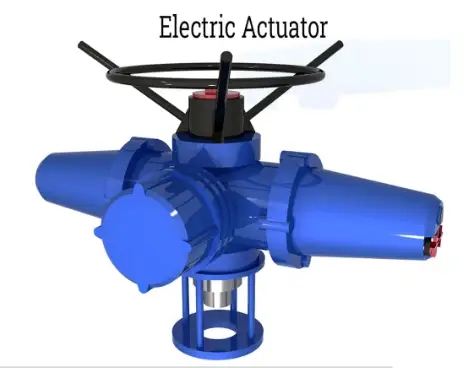
electric actuator
Each part is carefully made on an assembly line in the factory. People watch every step, from wrapping copper wire around the rotor to putting in the screw that holds the motor together. Quality experts check each batch to make sure everything's just right. To speed things up, different parts are made at the same time, so everything comes together smoothly.
Raw materials and finished parts are moved around using machines and conveyor belts. Once the actuator is mostly put together, the final steps need a bit more human touch. Trained workers follow a special guide made by engineers to finish up. Quality experts keep an eye on everything, making sure each piece is perfect before moving on.
Quality Control
After the actuators are all put together, they go to the Quality Control team for a big check-up. This first inspection makes sure everything's the right size and meets all the requirements. The first unit gets a stress test to see if it can handle tough conditions, like different temperatures and how often it can be used.
Once the Quality Control team's happy with the results, the whole batch gets the green light for shipment to the distribution center. When they get there, the products are brought into the warehouse. Then, a product engineer gives 'em another once-over to make sure they're still in tip-top shape and nothing got damaged during the trip.
After the inspection, the products are added to the stock and ready for folks to buy. Once someone makes a purchase, the logistics team does a quick check again before packing the units up nice and careful, getting 'em ready to ship.
Types of Electric Actuators:
Linear Actuators
- Description: Turn electrical energy into straight-line motion. They're often used to push, pull, or lift stuff.
- Types:Rod Actuators: Got a rod that sticks out or pulls in to make things move.Screw Actuators: Use a lead screw to create straight-line motion.Belt Actuators: Use a belt to create straight-line motion.
- Applications: Automated doors for robots, packing machines, hospital beds, and stuff like that.
Rotary Actuators
- Description: Make things spin using electrical energy.
- Types:Motor-Based Actuators: Use electric motors to spin stuff, like servomotors or stepper motors.Gear-Driven Actuators: Use gears to slow down or boost torque.
- Applications: Spinning valves in robots, conveyor systems, manufacturing, and turntables.
Servo Actuators
- Description: Give super precise control over speed, position, and movement by combining a motor and a sensor.
- Applications: Robotics, antenna positioning, camera focusing, CNC machine tools, and more.
Stepper Motor Actuators
- Description: Control each step super precisely with stepper motors. Great for when you need exact positioning.
- Applications: Printers, automatic control systems, mounters, and 3D printers.
Piezoelectric Actuators
- Description: Make tiny but super accurate movements using a special material that changes shape with voltage.
- Applications: Precise placement and control in optical tools, microscopes, and medical gear.
The Components of an Electric Actuator
This part'll talk about the different bits that make up an electric actuator.
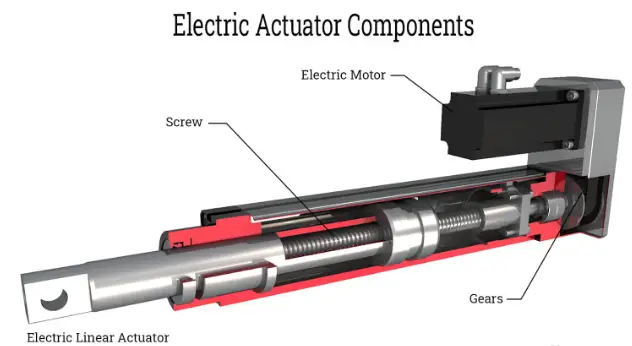
electric actuator
Front/Rear Clevis
This is a U-shaped metal piece with holes at each end for a pin, bolt, or other fasteners. It lets the actuator be attached to the application using clevises at the front and back.
Outer Tube
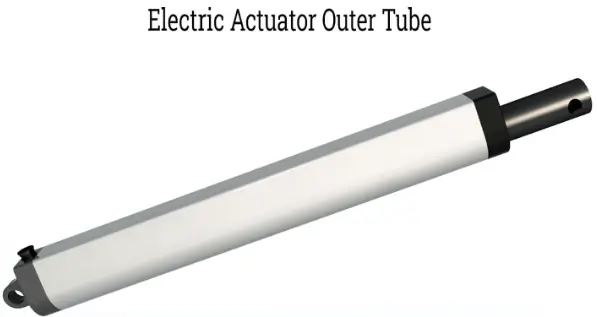
electric actuator Outer Tube
Also called the cover tube, this is an aluminum tube that protects the outside parts of the linear actuator and keeps all the insides safe inside.
Inner Tube
Also known as the extension tube, translation tube, piston, or drive tube, this is usually made from aluminum or stainless steel. It holds the spindle when it's retracted and is linked to the drive nut, which moves along the spinning spindle to extend or retract the tube.
Spindle Component
This is the rotating screw, lead screw, or lifting screw. It's a long, straight rod that spins inside the actuator. This part controls how the inner tube extends and retracts, creating the linear motion. Made from steel for strength, the spindle can have different threading to handle different speeds and loads.
Safety Stop
This is at the end of the spindle and stops the inner tube from extending too far.
Wiper Sealing Component
This is attached to the end of the outer tube and keeps dust and liquids out of the spindle area. It makes sure there's a good seal between the inner and outer tubes, which affects the actuator's IP rating.
Drive Nut
The drive nut moves along the spindle and is connected to the inner tube, letting it retract and extend. It can be made from plastic or metal and might have a key to stop the inner tube from spinning.
Limit Switches
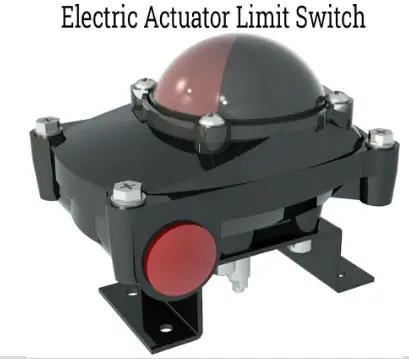
electric actuator Limit Switches
These manage the position of the inner tube when it's fully extended or retracted by cutting off the power to the motor. They keep the actuator from going too far in either direction and can also send signals.
Gears for Electric Actuators
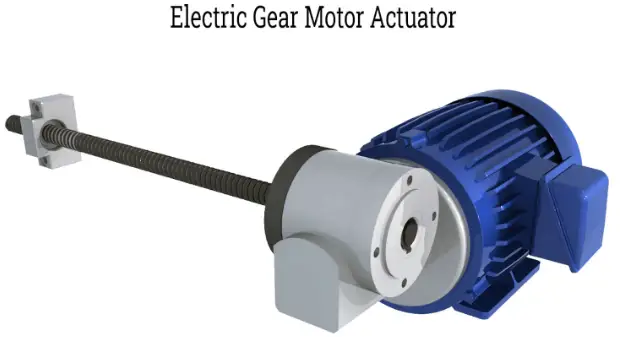
Gears for Electric Actuators
These gears are made from plastic or steel and they work together with other gears to change how fast the driving mechanism goes compared to the part it's moving. The gear that's connected to the power source, like the motor, is called the drive gear.
Motor Housing
This housing is like a protective shell for the gear motor and all the insides. It keeps them safe from getting damaged by stuff outside. The motor housing is usually made from high-quality plastic.
DC Motor
This is the direct current motor, and it's where all the power for the electric actuator comes from. There are different types of DC motors. The most common ones are called brushed motors. Here's what they're made of:
Motor Stator
The stator is the part of the motor that doesn't move. It's the outer part and includes the motor housing, caps, and two permanent magnets. It makes a stationary magnetic field around the rotor.
Rotor
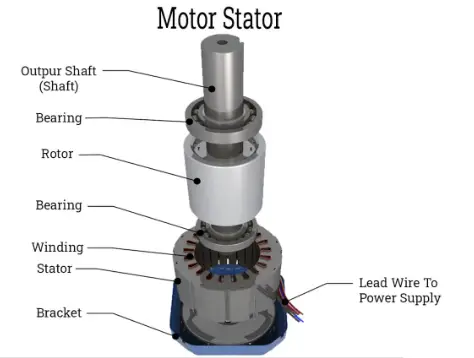
motor stator
This is also called the armature, and it's the part of the motor that spins. It includes the motor shaft, silicon steel laminates, copper windings, and the commutator.
DC Motor Commutator
These are two plates on the motor shaft that connect the electromagnet coil. The commutator flips the motor's polarity, keeping it spinning smoothly and preventing any loss of power.
Carbon Brushes
These use sliding friction to pass electricity from the stator to the rotor of the motor.
Motor Shaft
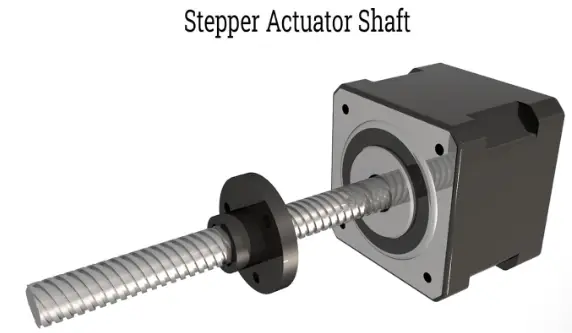
stepper actuator shaft
This part connects the gear motor to the base of the stator on the DC motor.
Output/Feedback Sensors
These parts tell the control box MCU where the actuator's stroke position is. This position feedback is super important for linear actuators that need fancy functions like synchronization and memory positioning. There are a few types of output sensors:
Hall Effect Sensor
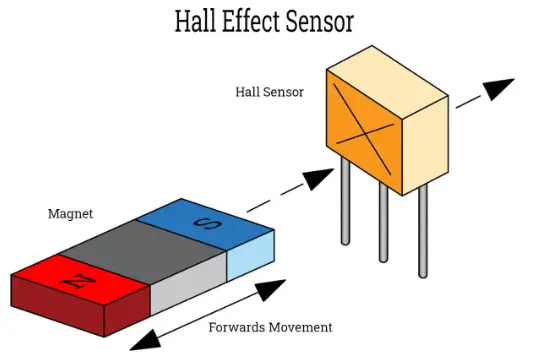
hall effect sensor
This sensor sends out a signal based on the magnetic field around it. When the magnetic field is strong enough, it makes a Hall voltage, which is the output voltage. A linear actuator with position feedback from a Hall sensor makes sure everything's accurate and reliable.
Potentiometer (POT) Sensor
This sensor has a wiper and two end connections that change the electrical signal output. As the linear actuator's lead screw turns, the resistance between the wiper and the end connections changes. Each resistance value matches a specific position in the actuator's stroke.
Reed Sensor
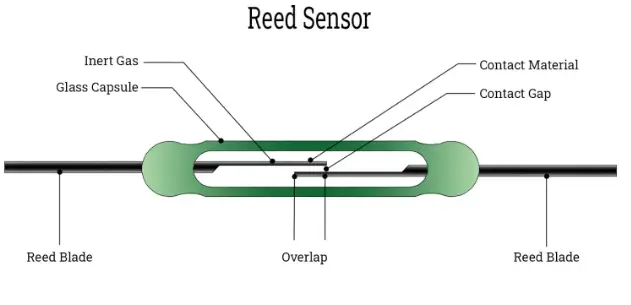
Reed Sensor
This sensor is like a magnetic switch. It's made of a pair of metal reeds in a sealed glass tube. The contacts are usually open but close when there's a magnetic field, which completes the circuit and stops the actuator from getting power.
How an Electric Actuator Works
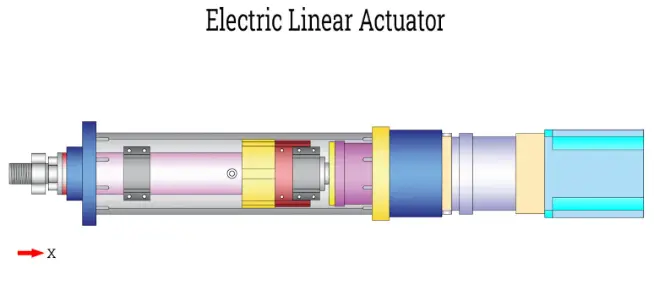
electric linear actuator
The electric motor spins the spindle or rotor, creating a rotary motion. This spindle turns inside a ball screw nut. The motor spindle is directly connected to a helical screw through the drive shaft.
As the spindle spins, the ball screw nut moves forward or backward along the helical screw. It's attached to a hollow piston rod, which turns the motor's spinning motion into straight-line motion inside the actuator, no matter which way it spins.
An electric drive controls the motor, letting you adjust the rotation speed and, in turn, the actuator's linear speed. A feedback system gives position data, letting the actuator move to specific spots, stop, start moving again, or go back to its resting place.
The torque, or twisting force, the motor makes is linked to its power, which also affects how much force the actuator can use.
Benefits and Drawbacks of Electric Actuators
Electric actuators have some great perks:
Easy Integration
They're easier to hook up than hydraulic or pneumatic systems. They often come with programmable controllers and microprocessors that make it simple to run modern industrial equipment.
Precision Levels
They're super precise for motion control. They let you make exact adjustments to torque, speed, and force at different points in the motion.
Safety and Convenience
Unlike hydraulic and pneumatic actuators, electric ones don't leak or get contaminated. They're cleaner and safer, making them a convenient choice for many jobs.
Cost Efficiency
In the long run, electric actuators are usually more cost-effective. They need little maintenance, are easy to operate and install, and can handle different environments. Their durability and reliability add to their overall value.
More Advantages
- Easy to assemble with quick-connect wires and cables.
- Compact and quiet during operation.
- Simple to set acceleration and deceleration.
- No need for external sensors.
- Help machines adapt to flexible processes.
- Drawbacks of Electric Actuators
There are a few downsides too: - Higher initial cost.
- Not explosion-proof.
- Sensitive to vibrations.
- More thrust means less speed.
- More speed means less thrust.
- More complex technology.
- But the good stuff outweighs the bad.
- How to Choose an Electric Actuator
Electric actuators are great for jobs that need force. Unlike pneumatic actuators, which use pressure on a piston, electric ones use the motor's torque. When picking an actuator, think about the load, friction, and angle of the load. - For pneumatic actuators, the distance the load travels decides the stroke length. Electric actuators need similar info but with some extra details. To avoid overextension, the max stroke should be the usable stroke but not more than four times the helical screw's pitch. Electric actuators can position things in many ways, so the total movement should match the needed stroke. Different screw pitches are available, letting you mix and match parts for different jobs.
Choosing Between Electric and Pneumatic Actuators
It depends on if you have compressed air. If not, and if hydraulic options aren't an option, electric actuators are usually the best choice. They're especially handy for jobs needing multiple positions and offer benefits like low noise, high precision, rigidity, controllability, and lower operating costs.
- Efficiency and Energy Savings
Electric actuators are super precise and adaptable. They're cost-effective because they're energy-efficient, often saving you a lot of money. - They're especially good for jobs needing precise multiple positions. Unlike pneumatic cylinders, which need extra parts to do similar things, electric actuators stay accurate and efficient over time. They're also super responsive, starting and stopping almost instantly compared to hydraulic or pneumatic systems.
- Electric actuators work without delays or lag. Pneumatic cylinders need a compressor running all the time to keep pressure up. Electric actuators only work when needed, saving you a ton on electricity costs.
Conclusion
Electric linear actuators turn electrical energy into motion. There are different types with different abilities. They're better than other kinds because they're easy to assemble, more precise, and cost less. They're also safe to use in lots of different situations.
Related Articles
Subscribe to JMBom Electronics !













